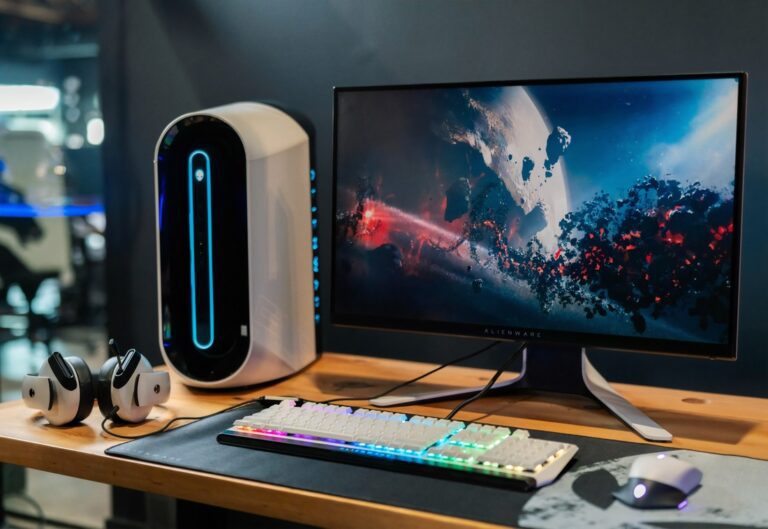3D game development as a technology and as an art form. These games are played on personal computers, consoles, and mobile phones.
Developers create new games using 3D modeling and programming software. They can also create 3D models and textures for use in games. 3D games have many advantages over 2D games; they’re faster, more immersive, and more engaging.
Hello everyone, In this post, I will discuss the benefits and drawbacks of 3D game development and compare key features of 3D and 2D game development.
Without wasting your time, Let’s get started:
What is 3D Game Development?
A 3D game is played from a first-person perspective. This allows players to navigate freely through a digital world. The environment appears three-dimensional because it’s rendered from multiple angles.
In addition, 3D games use motion capture technology to allow characters to move and emote naturally. By adding depth, lighting, and sound, developers render realistic environments for players to interact with.
Games using this technology are great for social interaction because players can interact in real life with characters from their games. Emotional engagement is far more effective when augmented by natural human expression.
How Does 3D Gaming Work?
When you play a 3D game, your computer is actually creating a two-dimensional image of the game world and then projecting that image onto your screen.
You see the game world as if you were standing in the middle of it. This is why games that require 3D glasses tend to look better on an HDTV than on a standard monitor.
Your computer also creates a three-dimensional world for the characters in the game. These characters can walk around and interact with the environment.
When you move your character around, the computer uses your movements to calculate the movement of the other characters and the environment in the game.
2D vs 3D Game Development
3D games are a lot more popular than 2D games. From console and PC games to mobile applications and video games, 3D games are everywhere.
Games that use three dimensions offer a much more realistic gaming experience. Characters look and act much more realistically in a 3D world than in 2D one. This is because there are many more resources required to create 3D games than 2D ones.
However, developing 3D games is far more complicated than creating 2D ones. Therefore, it’s important to know the differences between 2D and 3D gaming before making a decision.
Differences
- 2D game development is typically faster and easier than 3D game development. This is because 2D games require less art and animation, and the gameplay is usually simpler.
- 3D game development usually results in a more immersive and realistic experience for the player. This is because 3D games can more accurately recreate real-world environments and objects.
- 2D games are usually played on a flat surface, such as a computer screen or a piece of paper. 3D games are played in a three-dimensional environment, such as a virtual reality headset or a three-dimensional TV.
- The fourth point is, 2D games often use sprites, or two-dimensional images, to represent characters and objects. 3D games use three-dimensional models to represent characters and objects.
- Last but not least, 2D games are typically restricted to two dimensions, meaning that the player can only move up and down, or left and right. 3D games are not restricted to two dimensions, meaning that the player can move in all directions.
Similarities
There are several key similarities between 2D and 3D game development, the most obvious being that both involve the creation of digital environments in which players can interact.
Both types of game development also require a strong understanding of game mechanics and player experience, as well as an ability to create engaging and visually appealing content.
Overall, there are both similarities and differences between 2D and 3D game development. However, the most important thing to remember is that both require a strong understanding of game design and a commitment to creating engaging
Benefits Of 3D Gaming
Here are the 5 key benefits of 3D game development:
1. Increased immersion and engagement
Three-dimensional game development creates an immersive experience that can help players feel more connected to the game. This can lead to increased engagement and motivation to keep playing.
2. Greater Level of Realism
With three-dimensional graphics, a 3D game development company can create a more realistic gaming experience. This can make players feel more engaged with the game world and can create a more believable gaming experience overall.
3. More Engaging Combat
In many cases, three-dimensional game development can create more engaging and exciting combat sequences. This can add to the overall excitement and enjoyment of the game.
4. Improved Exploration
Three-dimensional game development can also lead to improved exploration gameplay. This can allow players to explore the game world and can add to the sense of discovery and adventure.
More: Top 5 Defi Development Company That Becoming Rapidly Popular!
5. Greater Sense of Scale
Finally, three-dimensional game development can give players a greater sense of scale. This can make the game world feel larger and more expansive and can add to the overall sense of immersion.
Final Words
In conclusion, the benefits of 3D game development are that it allows for more realistic graphics, can create a more immersive experience, and can make games more challenging.
However, the drawbacks are that it can be more expensive and time-consuming to develop a game in 3D, and some players may prefer simpler 2D games.
Ultimately, it is up to the game development company to decide whether the benefits of 3D game development outweigh the drawbacks. Moreover, If you found this article useful and valuable, please share it with others as well. Thank you for reading till the end.

